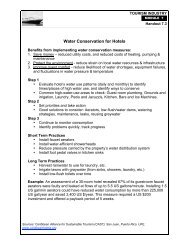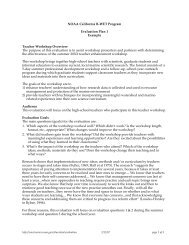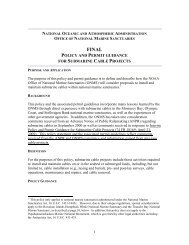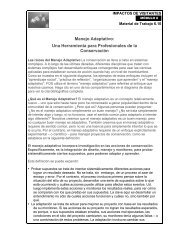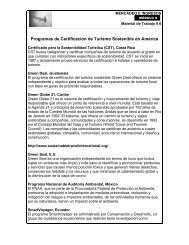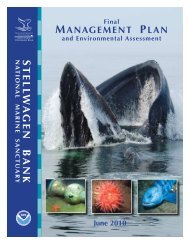The Hawaiian spinner dolphin, Stenella longirostris: Effects of tourism.
The Hawaiian spinner dolphin, Stenella longirostris: Effects of tourism.
The Hawaiian spinner dolphin, Stenella longirostris: Effects of tourism.
You also want an ePaper? Increase the reach of your titles
YUMPU automatically turns print PDFs into web optimized ePapers that Google loves.
24<br />
and then throw their tail over their head, reentering the water tail first and slapping their<br />
dorsal surface against the water. Dolphins occasionally combine tail-over-head leaps<br />
with a spin.<br />
Tail slaps involve <strong>dolphin</strong>s slapping their tail flukes against the water in either<br />
the normal or inverted position (Norris and Dohl 1980, Norris et al. 1994a). Tail slaps<br />
produce a loud noise which can be heard for several hundred meters in the air and I<br />
assume that there is a loud underwater component as well. Tail slaps which are<br />
repeated in succession produce a sound similar to a slow outboard engine and have<br />
hence been termed motorboating (Norris and Dohl 1980). Shane (1990) hypothesized<br />
that tail slaps were at least at times associated with aggression in bottlenose <strong>dolphin</strong>s.<br />
In the head slap, the <strong>dolphin</strong> emerges from the water, as far as mid belly, and<br />
slaps its anterior ventral surface against the water. Backslaps are the inverse <strong>of</strong><br />
headslaps. Dolphins exit the water as far as mid body, and slap their dorsal surface<br />
against the surface <strong>of</strong> the water (Norris and Dohl 1980).<br />
Norris et al. (1985) discovered that <strong>spinner</strong> <strong>dolphin</strong>s were easily disturbed by<br />
humans in the mornings, just before they descended into rest. At times, <strong>dolphin</strong>s were<br />
disturbed to such an extent that they left the bay and re-initiated morning travel along<br />
the coast. Human activity could change the activity level <strong>of</strong> a school (usually from low<br />
to high) at anytime during the day, causing <strong>dolphin</strong>s to scatter, leap, aggregate, initiate<br />
evasive maneuvers, or undergo a combination <strong>of</strong> these behavioral changes (Norris et al.<br />
1985). <strong>The</strong> frequency and type <strong>of</strong> aerial activities has been used as an index <strong>of</strong> the<br />
arousal <strong>of</strong> individual cetaceans and <strong>of</strong> schools as a whole (Herman and Tavolga 1980,





